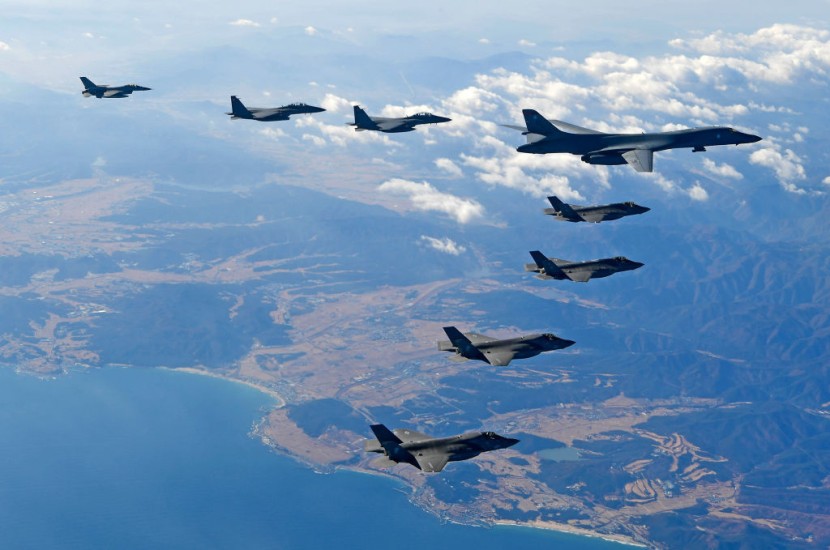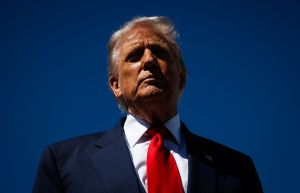
A day after scrambling fighter jets in response to what seemed to be a North Korean bombing simulation, South Korea and the United States started joint maritime drills with a US aircraft carrier on Friday, according to South Korea's military.
The Joint Chiefs of Staff of South Korea said that the maritime exercises would take place on October 7-8 in the waters off its east coast. The exercises follow North Korea's Thursday sea launch of two ballistic missiles and subsequent flight of bombers close to the South Korean border.
North Korea Condemns US Aircraft Carrier's Repositioning
In response to a test on Tuesday in which North Korea launched a ballistic missile that overflew part of Japan, the US strike group has already taken part in a trilateral, this week, South Korean and Japanese warships participated in missile defense drills.
In a conference call on Friday, senior defense officials from Japan, South Korea, and the United States condemned North Korean launches and concurred that recent trilateral maritime drills have improved their capacity to respond to North Korea, according to a statement from South Korea's ministry of defense.
The South sent out 30 fighters in response to the unusual bombing exercise carried out by at least eight North Korean fighter jets and four bombers on Thursday. Warplanes descended from the sky on both sides of the heavily guarded border as tensions over Pyongyang's recent missile launches rose.
The United States' decision to move the aircraft carrier closer to the peninsula was denounced by North Korea on Thursday, which claimed it constituted a major threat to the peace.
Asserting that the launches were a fair countermeasure to the joint US-South Korea maneuvers, the North Korean foreign ministry also criticized Washington for requesting a UN Security Council meeting in response to the launches.
The United States accused China and Russia on Wednesday of backing North Korean leader Kim Jong Un by obstructing efforts to impose more stringent sanctions on Pyongyang over its development of nuclear weapons. Russia's representative referred to the latest penalties as a dead end, and China stated that it preferred to concentrate on positive steps to defuse tensions, as per Reuters via MSN.
Despite the fact that the international community has so far shown no sign of accepting it, many experts believe Kim Jong Un's ultimate objective is to convince the US to recognize North Korea as a legitimate nuclear power and to lift the associated sanctions.
According to a statement from the Joint Chiefs of Staff of South Korea, the missiles fired on Thursday were launched 22 minutes apart from the capital area of the North and touched down between the Korean Peninsula and Japan.
The first missile traveled 350 km (217 miles) and reached a maximum height of 80 km (50 miles), while the second traveled 800 km (497 miles) and had an apogee of 60 km (37 miles).
The flight information was consistent with Japanese judgments made public by Yasukazu Hamada, Japan's Minister of Defense, who certified that the missiles did not enter Japan's exclusive economic zone. The second missile may have been launched on an irregular trajectory, he continued.
It is a word that has previously been used to describe the flying characteristics of a North Korean weapon designed to resemble the Russian Iskander missile. The Iskander missile flies at low altitudes and is intended to be maneuverable in flight to increase its chances of evading missile defenses.
The military of South Korea claimed that it closely coordinates with the US to maintain readiness while stepping up its monitoring posture. The continuous launches by North Korea, according to Japanese Prime Minister Fumio Kishida, are totally intolerable, Daily Mail reported.
South Korea's Jets vs North Korea's Warplanes
Boeing produces the F-15K Slam Eagle combat plane for South Korea. According to the website Airforce Technology, the aircraft can carry out long-range precision strike missions during day or night, in any weather circumstances, and are fitted with state-of-the-art mission equipment to execute air-to-ground, air-to-air, and air-to-sea missions.
Since more than 30 years ago, North Korea has not expanded its collection of military aircraft. Around 75 of its combat aircraft can be used, according to Joseph Dempsey, a research associate for defense and military analysis at the International Institute for Strategic Studies.
Dempsey asserts that South Korea's air force has access to more than 500 combat aircraft. The North Korean air force could have conducted its training exercises using fighter jets from the Soviet era, said Ryo Hinata-Yamaguchi, project assistant professor at the University of Tokyo's Research Center for Advanced Science and Technology, according to News Week.
Related Article: Russia, China Protect, Help North Korea as Kim Jong Un Enjoys 'Blanket of Protection' from 2 Nations, US Claims at UN Meeting
@YouTube
© 2026 HNGN, All rights reserved. Do not reproduce without permission.








